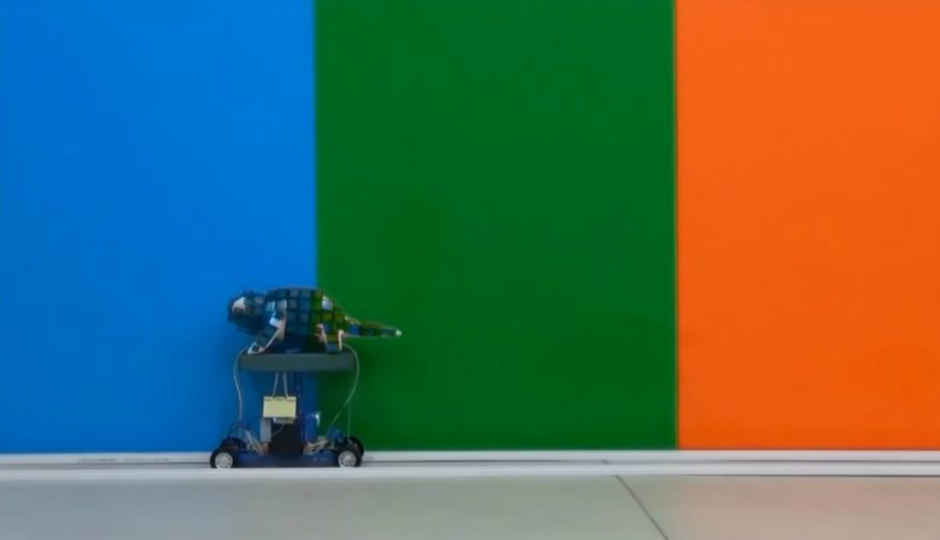This artificial shade-changing skin works like a chameleon’s camouflage

This is possibly a crucial step towards serious applications of disguise.
In line with multiple crucial innovations in the field of science and robotics, scientists hailing from Wuhan University, China, have exhibited the ability of an artificially-developed skin to change its colour and adapt to different backgrounds and surroundings. The researchers 3D-printed a plastic chameleon, on which they put square electronic scales, with a mechanism to replicate the colour of the background of the object.
These electronic scales had a thin glass film on top, above a layer of Indium tin oxide. This transparent conductor allowed the electronic scales to generate an electric field. Microscopic holes on the glass were filled with gold bumps, layered on top with silver-laden gel. When an electric field would run through the scales, the generated electricity would deposit or remove silver on or from the gold bumps, depending on the polarity. These gold-and-silver bumps could then be altered in size, to relay any colour within the visible spectrum to the outer electronic scale.
Perception of colour in surroundings was done by installing colour sensors within the eyes of the artificial chameleon. Once the colour is perceived, the electronic scale mechanism adjusts the colour of the scales according to the background. While this is not the first time an attempt has been made to present camouflage on artificially synthesised skins, the video demonstration shows fluid implementation of the technology, and can aid in developing jackets and vests for the military, rendering individuals practically invisible.
Technically termed “plasmonic cells”, these may also be used in future for developing low power, colour electronic papers and flexible displays. In line with recent development, a team of researchers from the Italian Institute of Technology (IIT) are working on making robots biodegradable. While present day robots are made of metal and plastic, fitting them with biodegradable framework will allow them to decompose once they’ve served their lifetime. This, in turn, will give way to a more economical future for robotics, once robots find their more mainstream place in everyday lives.
The following video beautifully demonstrates the working of this technology:




